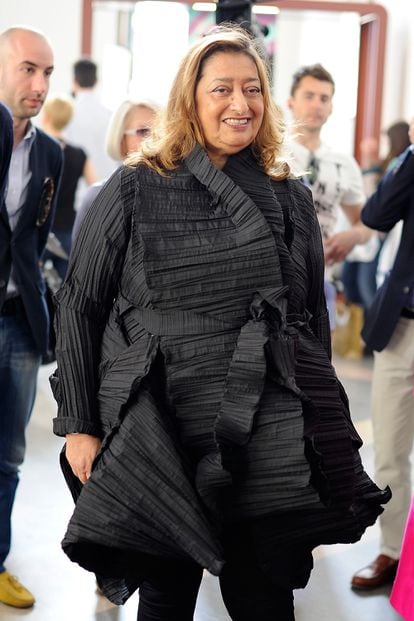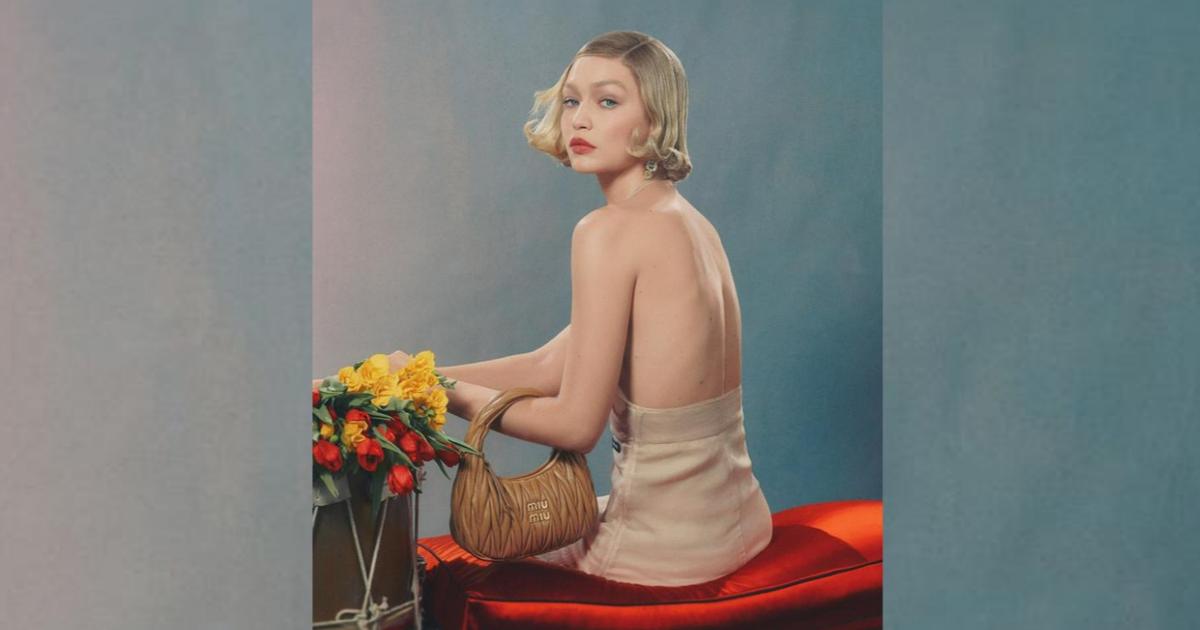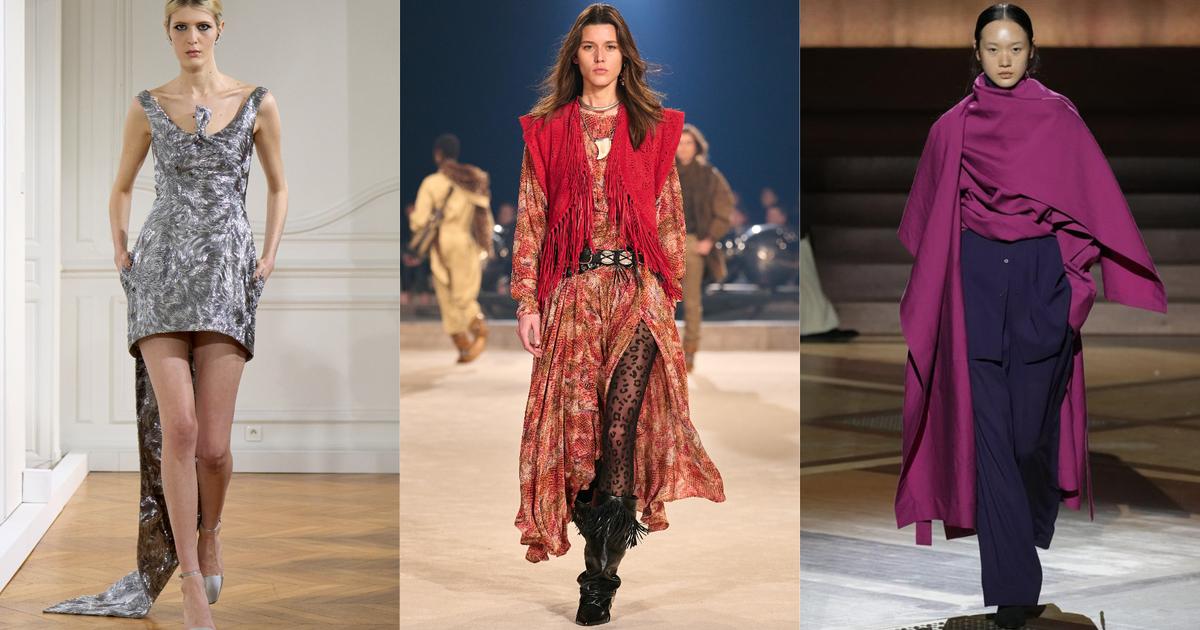There are designers who have clients, and designers who have loyal ones.
The Japanese Issey Miyake, who died on August 9 at the age of 84, was among the latter.
And, furthermore, his parish is perfectly locatable.
“Why do so many prominent professionals in the world of culture love his clothes?” asked the art critic Herbert Muschamp in 1998 when reviewing his exhibition at the Fondation Cartier in Paris.
He had no reason for it.
For more than two decades, the soundtrack to openings,
vernissages
, panel discussions and other art-world events has been as much the clink of champagne glasses as it is the vaporous, technical rustle of Miyake's pleated womenswear (since 1993, the launch date of his Pleats Please line) and for men (from 2013, when he adapted his best-seller to the male public in the Homme Plissé brand).
Gallerists, curators, architects, photographers, writers, journalists: few escape the fascination for the work of the designer who best understood that the future of fashion depended on the future of its fabrics.
Fashion without logos, but instantly recognizable, just like that of Martin Margiela, another classic of the artistic circuit.
To find Miyake garments, you don't have to go to the red carpets, but to the day-to-day life of cosmopolitan cultural life.
Architects like Zaha Hadid, designers like Jonathan Anderson and Samuel Ross, fashion critics like Tim Blanks, Suzy Menkes and Angelo Flaccavento, gallery owners like Barry Friedman, artists like Joana Vasconcelos and Graciela Iturbide, politicians like Carmen Alborch and music icons like Grace Jones and Joni Mitchell have been seen in public, throughout these decades, with Miyake garments.
Steve Jobs was also faithful to him since he ordered a perkins neck sweater and the Japanese responded to his request with a hundred similar sweaters.
In the following years, the founder of Apple did not wear anything else, according to his biographer, Walter Isaacson.
The idea of the uniform is a tempting hypothesis when it comes to explaining the speed with which the Miyake brand, which to this day remains an independent company, expanded among certain groups.
But there is an explanation – perfectly compatible with the previous one – that does not appeal to the gregarious, but to something much more earthly: the practical.
This is the argument that the American architect and interior designer Rafael de Cárdenas gave to Town & Country last April, after saying that he had discovered Miyake during his years as a designer at Calvin Klein.
The first time she dressed in her clothes, she recounted, “my partner asked me if I was wearing my mother's clothes, because she believes a lot in elegance, but the truth is that it is a good way to have a sophisticated look by wearing it. actually sweatpants.”
Fashion journalist Tim Blanks dressed in Miyake during the Business of Fashion symposium in November 2019. Samir Hussein (Samir Hussein/Getty Images for T)
Architect Zaha Hadid in 2011. Jacopo Raule (Getty Images)
Possibly in that comfort lies one of the reasons for its success.
At the end of the 1980s, Miyake began to experiment with pleating fabrics in an unprecedented way.
It was not something new for him, since from the beginning of his career he had investigated the dialogue between technology and the old knitting or weaving craft techniques.
But he was more ambitious: instead of pleating the fabric before making the garment, he rolled and twisted the finished garments, introducing them in a machine that, by applying heat to the polyester, left the folds indelibly marked.
It was an irregular pleat, different in each garment, and also indestructible: as its users affirm, they are garments that can be put in the washing machine or the suitcase in any way, without fear of damaging the pleat.
The result is pants, shirts, sweaters,
At the same time, the silhouette they generate is wide and light like the paper lamps of Isamu Noguchi, one of Miyake's favorite designers.
In an era dominated by stylized and elongated silhouettes, this horizontality could be unflattering, as the art curator Antwaun Sargent underlined in the same text of
Town & Country,
where he recalls that he associated Miyake with women collectors of a certain age.
He decided to buy a pair of trousers after seeing them on Solange Knowles and has been faithful to the brand ever since, just like the historian Roger Cook, who at the age of eighty participated in a report on Miyake's clients in
The Financial Times
.
"Homme Plissé's advertising is mainly aimed at young people or the sports sector, but I think that older people can wear it perfectly," he explained about his favorite wide-leg pants.
"The sheer bodily gratification my Miyakes provide me wonderfully offsets the ravages of age."
Miyake's link to the creative class has even found its way into
marketing
textbooks .
In an article on marketing associated with experience, the French professor – and Republican deputy – Patrick Hetzel imagined Miyake's typical client: her name is Josyane and she is a communication executive who works in the Parisian golden triangle and lives in the Marais , which looks skeptically at luxury fashion designers and favors firms with sophisticated tastes, such as Miyake.
"Josyane is proud of her ten years of loyalty to this firm, which makes her part of a small tribe of people whose originality has served to create new styles," says Hetzel.
Fashion critic Angelo Flaccavento in an Issey Miyake Homme Plissé coat and pants during Paris Fashion Week in September 2018. Matthew Sperzel (Getty Images)
Joni Mitchell attends the Grammy Awards in April 2022 dressed as Issey Miyake. Axelle/Bauer-Griffin (FilmMagic)
Although the example may turn out to be a cliché —after all, that is what the categorizations in sociological manuals are for—, the observation of the Frenchman underlines another argument in favor of Miyake: the artistic and conceptual pedigree conquered after decades of collaborations with the world. of culture.
Miyake is the designer of pleats and the name behind two of the world's most famous fragrances (L'Eau d'Issey and L'Eau d'Issey Pour Homme, which started the craze for aquatic fragrances in the 1990s), but also a creator who has collaborated with William Forsythe, Yayoi Kusama and Cai Guo-Qiang, whose collections have featured memorable images shot by Lord Snowdon, Irving Penn and Nick Knight, and whose endeavors since 1997,
date in which he decided to take a step back from his work as a commercial designer to focus on experimental projects, they have starred in exhibitions in the most prestigious art centers in the world.
In some cases, both worlds have coexisted, as in the A-POC project, the last commercial brand in which he actively participated, and which consisted of tubular fabrics that, thanks to computer technology, allowed each user to cut out the desired garment without fear to unravel it
Miyake's work, after all, can be as intellectual or as immediate as you like.
And some of his biggest fans are betting on the latter.
Or, as fashion critic Tim Blanks told
The Financial Times
: “Don't think about Miyake, but dress him.
Put it on and then we'll talk."
You can follow ICON on
,
,
, or subscribe to the
Newsletter here
.








/cloudfront-eu-central-1.images.arcpublishing.com/prisa/HO6B5LN35374UGEJ2PPBWUOMYA.jpg)
